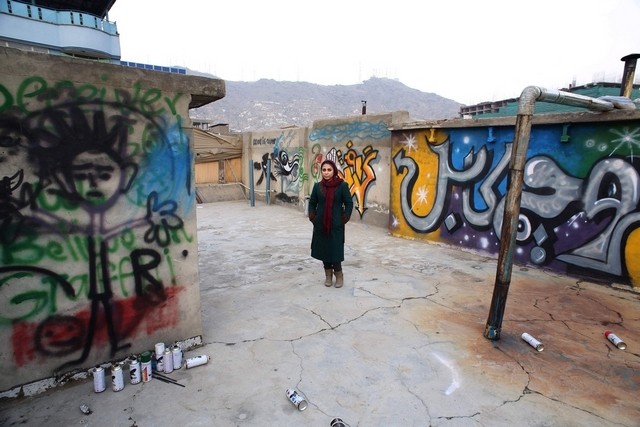Source: The National
Art preserves the ‘little’ moments that might otherwise be lost amid war and insecurity in Afghanistan, says Dr Francesca Recchia, author of The Little Book of Kabul. Follow Dr Recchia on Twitter: @kiccovich
For the past two years, photographer Lorenzo Tugnoli and I have looked at the city of Kabul through the eyes of a number of artists.
Their stories are told in The Little Book of Kabul, which we released in 500 copies, each signed, numbered, and stamped.
It’s an intimate look at people’s lives and a portrait of Kabul through their eyes.
The book came about when I went to Kabul in 2011 to write a magazine article about the art scene there. Lorenzo already lived in Kabul. We thought there wouldn’t be much to find. Many people thought we were crazy for undertaking the project.
In fact, what we found was a creative culture. We met a lot of artists and found we couldn’t do justice to what we had witnessed in an article and decided to do a book.
The book revolves around three artists. We developed deep personal relationships with them. We portray Kabul through their accents, their gestures, their voices.
Around these characters are a number of other situations and characters that contribute to create the context, to show the daily life of Kabul beyond the headlines.
The book’s construction is 47 photos and 21 short stories. It’s a very near, close-up look at tiny, tiny moments of daily life in Kabul.
I think that is the main difference with our book. The lens through which Afghanistan is presented to the world is very wide. All the tiny details are lost. We tried to show them, even if the world is focused elsewhere.
I am not underestimating the seriousness of the situation in Afghanistan now. I am saying that it’s not the only thing here. There is a striving for the preservation of little moments. That, I think, is the strength of the book: it offers these little moments that are almost lost.
We had many possibilities for artists to profile. The main criteria for us was that the artists would create work irrespective of international support. They love music, they make music, regardless of the funding. That for us was the main thing.
There was a phase that is decreasing now, where, for example, the US embassy would give money to organise an exhibition on women’s rights or someone else will organise an exhibit on children or corruption. But we thought that as soon as the money dried up they would disappear.
We were interested in artists that would consistently produce art, no matter the funding. Artists who are not dependent on the international community, or at least not entirely dependent on it.
In the past three years things have changed quite significantly in Afghanistan. There’s been a few less public events due to the insecurity and the elections. All these things have an effect on the international visibility of the Afghan art community.
Donors are less keen to take responsibility by putting money into events that might become a soft target. That’s because the level of the instability is higher than before, I think. It’s a vicious circle.
Some of the people we profiled in the book have left Afghanistan. Some are coming in and out. It’s partly because of the security situation, partly because of funding.
No matter what happens, Afghanistan is a country that is striving for expression, to find a voice that balances a long and complex history with desires for the future.
Read more Voices on Afghanistan
Read more: http://www.thenational.ae/world/voices-on-afghanistan/voices-on-afghanistan-preserving-moments-lost-amid-conflict#ixzz3C96CTHOT
Follow us: @TheNationalUAE on Twitter | thenational.ae on Facebook


